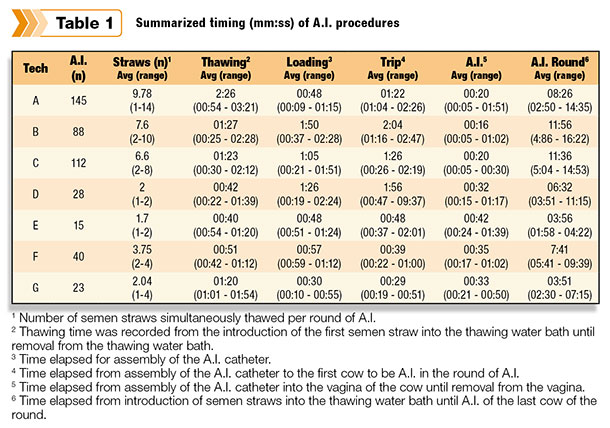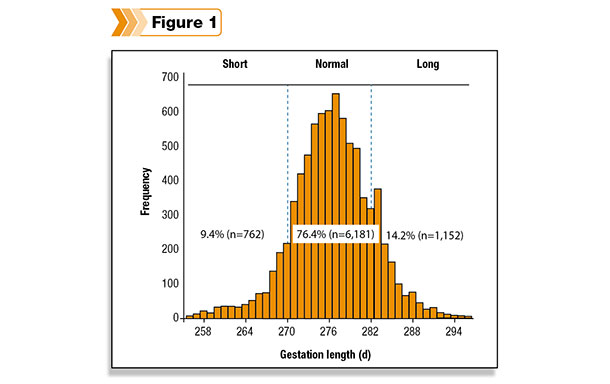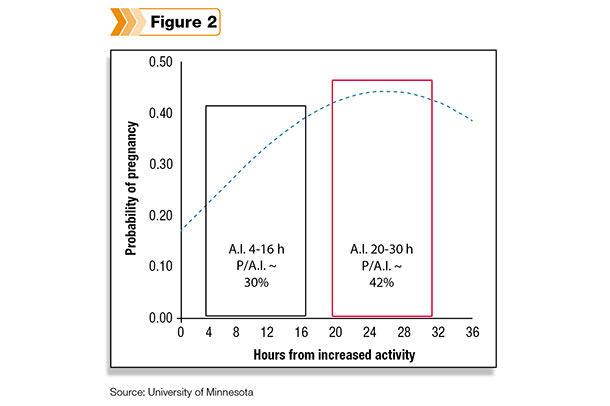The 2015 Joint Annual Meeting of the American Dairy Science Association (ADSA) and the American Society of Animal Science (ASAS) took place in Orlando, Florida, in July.
Florida’s magic city hosted researchers and the livestock industry to discuss the latest findings regarding animal behavior and well-being, animal health, genetics, dairy management, animal nutrition, milk quality, physiology and more.
Through poster sessions and oral presentations, researchers presented 2,447 abstracts over the five-day event that welcomed more than 3,200 attendees. Following is a short recap of several applicable presentations from the sessions.
A.I. in the smartphone era
Researchers from Ohio State University developed a mobile device application (app) to collect information during A.I. procedures. The findings stem from data collected by the app on 451 services by seven A.I. technicians (professional and herdsmen) on seven dairy herds.
Components of the app included:
- Login screen for individual users
- Capture of farm information
- Sire identification
- Type of semen used (sexed or conventional)
- Breeding program (A.I. following estrus detection or timed A.I.)
- Animals inseminated (cows or heifers)
- Animal identification
- Recording of the following metrics:
- Number of semen strawssimultaneously thawed
- Thawing time
- A.I. catheter assembly time
- Time from assembly of A.I.catheter to cow
- Time to A.I.
- Time elapsed for each round of A.I.
The information is then summarized to generate an electronic report, and all captured data are uploaded to a cloud database. This database can be used to benchmark metrics associated with performance of A.I. technicians. Results are shown in Table 1.

Researchers concluded that the app features a user-friendly interface for entering and managing A.I.-related events and accurately captured, summarized and integrated multiple events associated with the A.I. procedure under field conditions.
This work shows that monitoring and recording breeding practices from A.I. technicians under different management conditions is needed to identify practices that may affect reproductive outcomes in dairy herds.
Impact of gestation lengthon health, reproductionand production
Researchers from the University of Florida – Gainesville evaluated possible impacts of an abnormal gestation length on the performance of lactating dairy cows by examining the association of gestation length on incidence of diseases, milk production and reproductive performance.
The study evaluated 8,090 Holstein cows that had “short” (less than 270 days), “normal” (270 to 282 days) and “long” (greater than 282 days) gestation periods. Health events tracked were stillbirth, retained fetal membranes, metritis, mastitis, lameness, respiratory and digestive problems, culling or death.

Reproductive parameters monitored included pregnancy outcome for first A.I. at 32 days, reconfirmation of pregnancy on day 60, pregnancy loss and percentage of cows pregnant by 300 days in milk. Production was evaluated based on milk yield by 300 days in lactation.
Researchers concluded cows with normal gestation length had:
- The least disease incidence and risk of leaving the herd
- Improved reproduction performance and milk production
Cows with short gestation length had:
- Increased morbidity in the first 90 days in milk (primarily driven by incidence of stillbirth, retained fetal membranes and metritis)
- Risk of removal from the herd
- A production reduction of 1,102 pounds of milk
Cows with extended gestation length had:
- A reduced rate of pregnancy in the subsequent lactation
- A production reduction of 1,322 pounds of milk
Use of sexed-sorted semenand probability of pregnancyin Jersey cows
Research conducted at the University of Minnesota followed 455 lactating Jersey cows fitted with an SCR activity and rumination monitoring device to determine the effectiveness of using sexed semen with these animals, as well as the optimum timing for insemination.
The cows received three doses of prostaglandin (PGF2α) at 39, 53 and 67 days postpartum and were inseminated with sexed-sorted semen after detection of estrus following the 50-day voluntary waiting period. (PGF2α was administered plus or minus the 39-, 53- and 67-day cutoffs to follow the week-event schedule for repro management.) The timing of insemination was recorded.

The researchers recorded date and time when cows reached the activity threshold (AT equals the onset of estrus), date and time of peak of activity and date and time when activity fell below the threshold of activity. Pregnancy diagnosis occurred 31 days after A.I., and pregnancy was reconfirmed 66 (plus or minus three) days after A.I.
Results showed:
- The mean interval from reaching the activity threshold to A.I. was 17.2 hours.
- The mean interval between reaching the activity threshold and ovulation was 25.7 hours.
- Pregnancy per A.I. (conception rate) was greatest for cows inseminated between 23 hours and 41 hours after reaching the activity threshold.
Researchers determined that lactating Jersey cows inseminated with sexed-sorted semen have greater probability of becoming pregnant when insemination occurs 23 to 41 hours after reaching the activity threshold. This information may allow producers to selectively inseminate lactating cows with sexed-sorted semen when the exact time of onset of estrus is known – for example, when automated estrus detection systems are used.
In conclusion, different strategies can be used to manage reproduction on a dairy, and researchers have been working hard to understand better the relationship between physiology and practice to help producers on their daily decisions.
However, it is important to remember that the combination of strategies used and the respect for individual herd needs are the two major components you must keep in mind to take your reproductive success to reach the next level. PD

-
Glaucio Lopes
- Large Herd Manager and Repro Specialist
- SCR Dairy Inc.
- Email Glaucio Lopes




